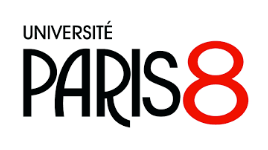16h30
visioconférence & Pouchet Salle 221
Nora Boneh (The Hebrew University of Jerusalem)
Lexical semantic change and syntactic stability in complex verb constructions featuring come in Hebrew
Change of location verbs like go and come appear in a multitude of complex verb constructions, often related to tense, aspect and modality, and have received extensive attention in the literature on grammaticalization and bleached verbs (Bolinger 1980, Heine 1993, Bybee et al. 1994, Kuteva 2004, Devos & Van der Wal 2014 among many others), showing at times strikingly parallel processes in the passage from the source item (simple verb) to the target (verb in a complex verb construction). The received wisdom regarding why such verbs are good candidates for being V1 in complex verb constructions is that they are basic, general, universal, frequent (Bybee et al. 1994: 9), or prototypical (Heine, Claudi, Hünnemeyer 1991: 33). But it has been shown that such verbs, despite being frequent, are not lexical universals (e.g. Wilkins & Hill 1995), and can vary quite considerably along several lexical dimensions {type of lexical aspect, type of directed location, ±deictic} (see Rappaport Hovav & Levin 1995, Fillmore 1971/1997, Oshima 2006 et seq., Sudo 2015, Levinson 2004, Barlew 2014), and therefore it cannot be claimed that they are basic, either.
Given this background, the purpose of this talk is to try and obtain a fine picture of which lexical features are necessary for come to function as V1 in particular complex verb constructions. To do so, two complex verb constructions in Modern Hebrew will be presented (the avertive with the form V1come + V2infinitive and a pseudo-coordination V1come & V2finite). These constructions will be then traced back to earlier stages of Hebrew (Biblical Hebrew, 1st millennium BCE and Rabbinic Hebrew, 2nd century AD), where for each stage the lexical properties of the simple verb come will be passed under review. Hebrew reveals to be useful for this sort of investigation since it displays a high degree of syntactic stability in these complex constructions, permitting the focus on lexical change.
The outcome of this investigation will allow formulating hypotheses regarding deictic and the path related meaning components and the necessary conditions they enable for the formation of particular complex verb constructions.



